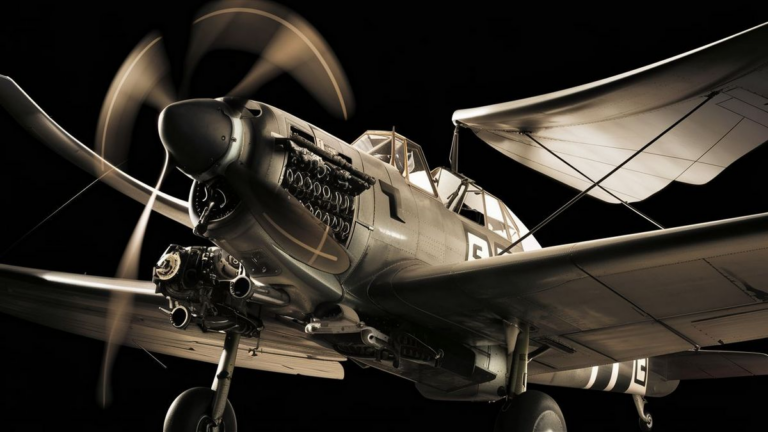In the crucible of World War I, aviation technology underwent a rapid evolution driven by the demands of aerial combat. Dogfights, the intense aerial battles between enemy aircraft, became a defining feature of the war in the skies. Pilots had to rely on a combination of skill, strategy, and the capabilities of their aircraft to emerge victorious. Several key technologies emerged during this period that played pivotal roles in shaping the outcome of these aerial skirmishes.
Machine Guns
One of the most crucial advancements was the synchronization gear that allowed machine guns to fire through the spinning propeller without striking the blades. Prior to this innovation, pilots had to resort to firing their weapons at awkward angles or using cumbersome methods like deflector plates. With the introduction of synchronization gears such as the Fokker Stangensteuerung, pilots gained a significant advantage in engaging enemy aircraft effectively.
Aerodynamics and Maneuverability
Aircraft design underwent significant improvements in aerodynamics and maneuverability during World War I. Engineers experimented with various configurations, including biplanes and monoplanes, to enhance speed, agility, and stability in flight. The development of advanced control surfaces such as ailerons and elevators allowed pilots greater control over their aircraft, enabling them to execute complex maneuvers with precision.
Engine Performance
The reliability and power of aircraft engines saw remarkable advancements during the war. Manufacturers pushed the boundaries of engine design to produce more powerful and efficient powerplants capable of sustaining extended flight durations and higher altitudes. Innovations like the rotary engine, which provided a high power-to-weight ratio, became instrumental in giving pilots the edge in dogfights by enabling faster climbs and swift maneuvers.
Communication and Intelligence
Effective communication and intelligence gathering were vital for success in aerial combat. Developments in wireless telegraphy allowed pilots to coordinate with ground control stations and fellow aviators in real-time, enhancing situational awareness and tactical coordination. Intelligence gathering through aerial reconnaissance provided valuable information about enemy positions, troop movements, and strategic targets, giving pilots a strategic advantage in planning and executing their missions.
Armor and Protection
As air combat became increasingly lethal, the need for improved pilot protection became evident. Innovations in aircraft armor and protective equipment helped mitigate the risks posed by enemy fire and debris. Armored panels were incorporated into aircraft designs to shield vital components and provide added protection for pilots, reducing the likelihood of casualties in aerial engagements.
Tactics and Strategy
Beyond technological advancements, the art of aerial warfare evolved through the development of innovative tactics and strategies. Pilots experimented with different formations, such as the famous German “V” formation or the British “flying circus,” to maximize their offensive and defensive capabilities. The concept of aerial supremacy became a central tenet of military doctrine, emphasizing the importance of gaining control over the skies to dictate the course of ground battles.
The technological innovations that emerged during World War I transformed aerial warfare and played a decisive role in shaping the outcome of dogfights. From advancements in weaponry and aircraft design to improvements in communication and tactics, each development contributed to the evolution of air combat tactics and strategies. Pilots who mastered these technologies and tactics gained a significant advantage in the unforgiving skies of the Great War.
Frequently Asked Questions
Here are some frequently asked questions about aircraft technologies during World War I:
| Question | Answer |
|---|---|
| 1. What role did machine guns play in aerial combat? | Machine guns equipped with synchronization gears allowed pilots to fire through propellers, enhancing their ability to engage enemy aircraft effectively. |
| 2. How did advancements in aerodynamics impact aircraft maneuverability? | Improvements in aerodynamics and maneuverability led to the development of more agile and stable aircraft, enabling pilots to execute complex maneuvers with precision. |
| 3. What were some notable engine advancements during World War I? | Engine technologies, such as the rotary engine, provided increased power and efficiency, allowing for faster climbs and maneuvers in aerial combat. |
| 4. How did communication technologies influence aerial warfare? | Wireless telegraphy facilitated real-time coordination between pilots and ground control stations, enhancing situational awareness and tactical coordination. |
| 5. What measures were taken to protect pilots during air combat? | Armor and protective equipment were integrated into aircraft designs to shield vital components and reduce the risks posed by enemy fire and debris. |
| 6. How did tactics and strategy evolve during World War I? | Pilots experimented with different formations and strategies to gain aerial supremacy, emphasizing the importance of controlling the skies in ground battles. |
Navigation technologies also saw improvements during World War I. Pilots relied on instruments like compasses and sextants for navigation, but advancements such as gyroscopic compasses and aerial maps enhanced accuracy and efficiency in locating targets and navigating through challenging conditions.






